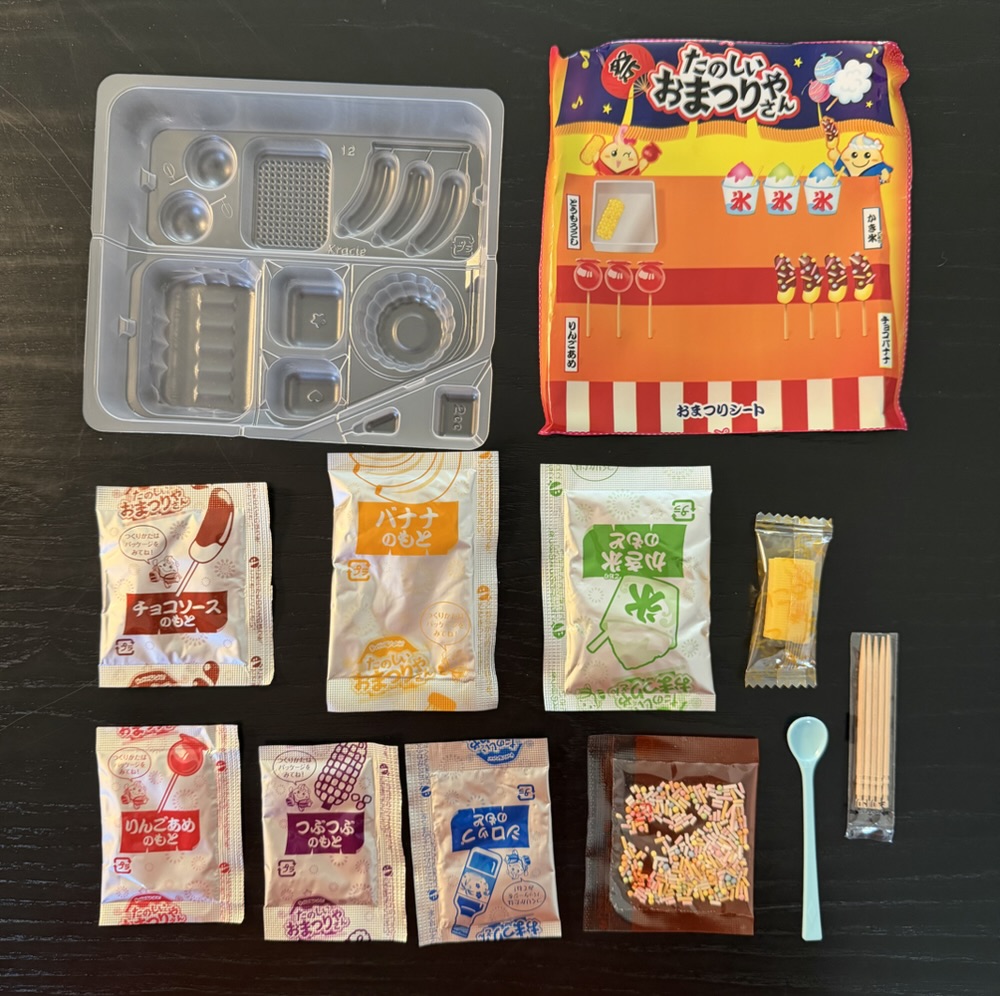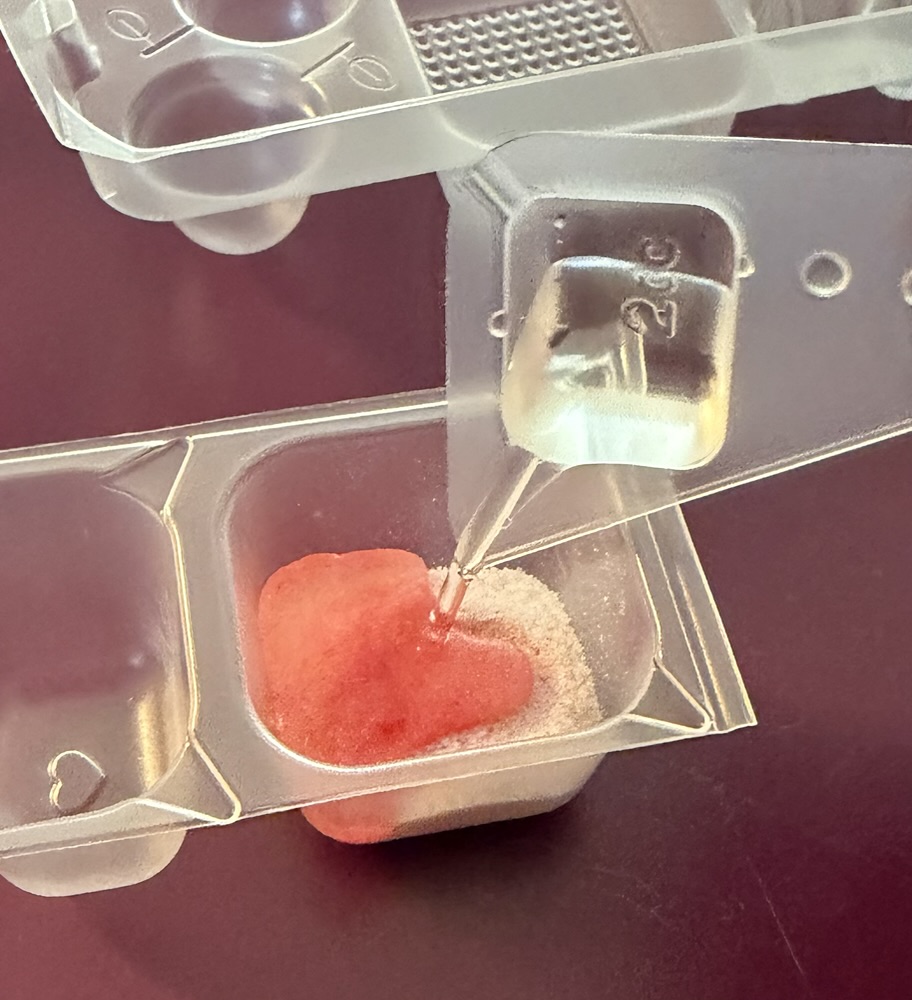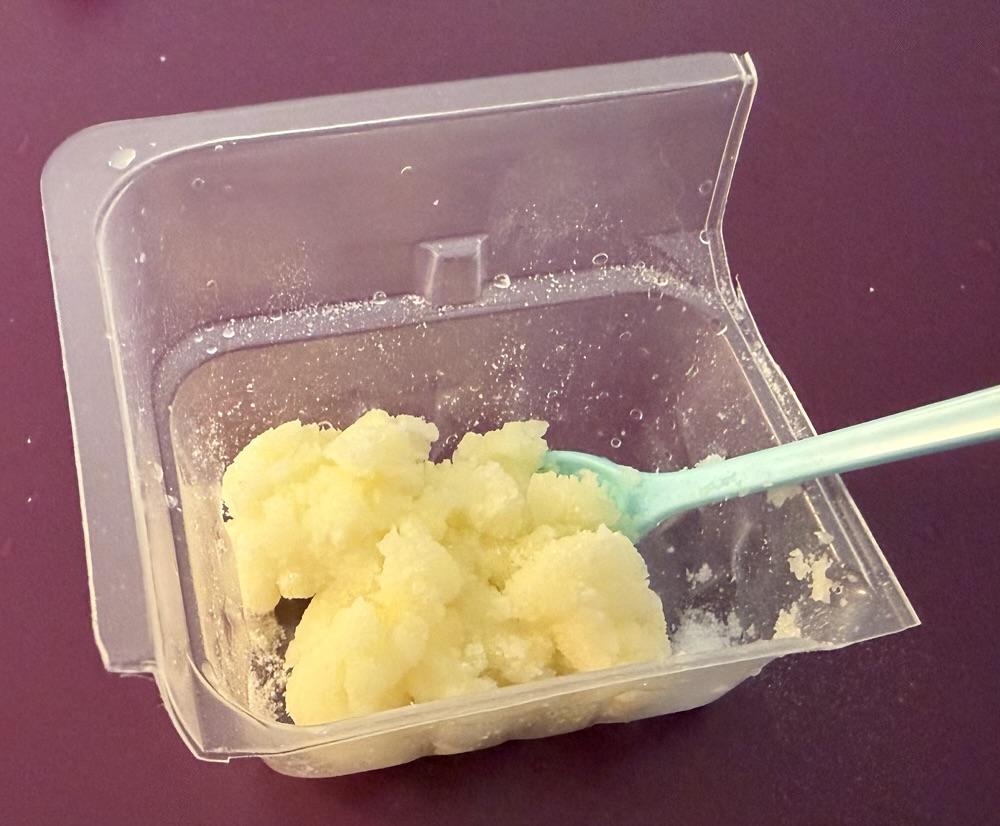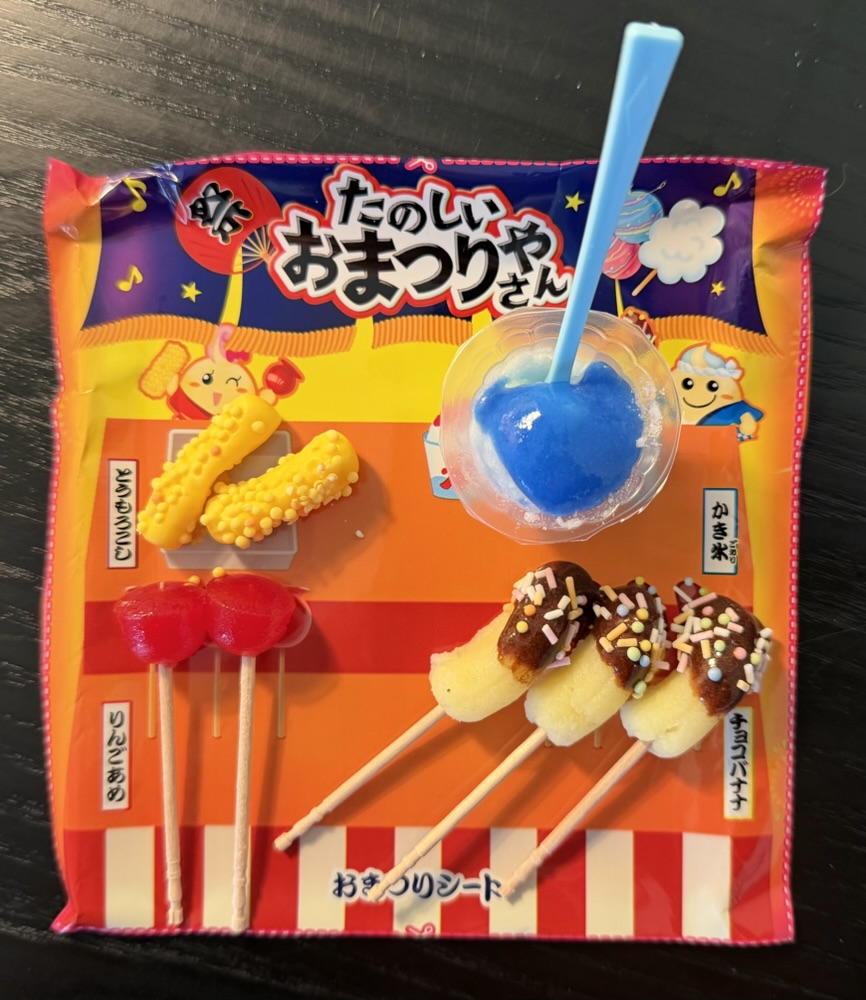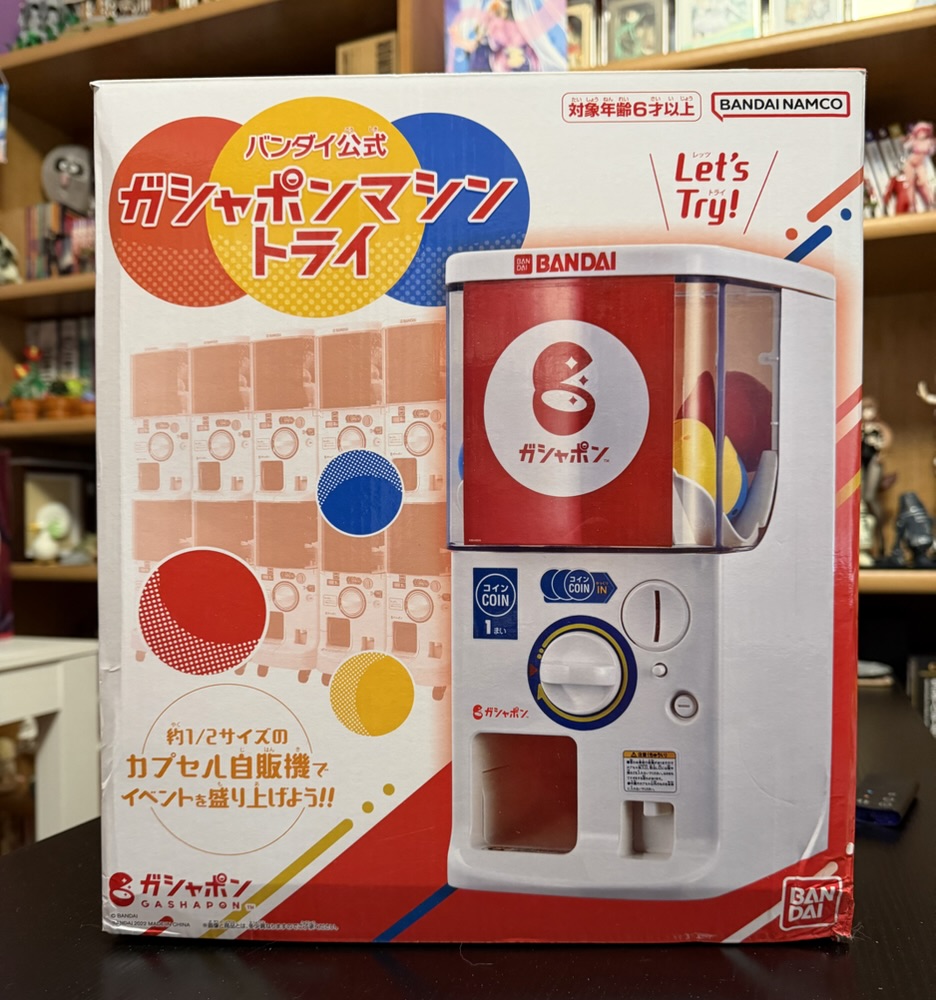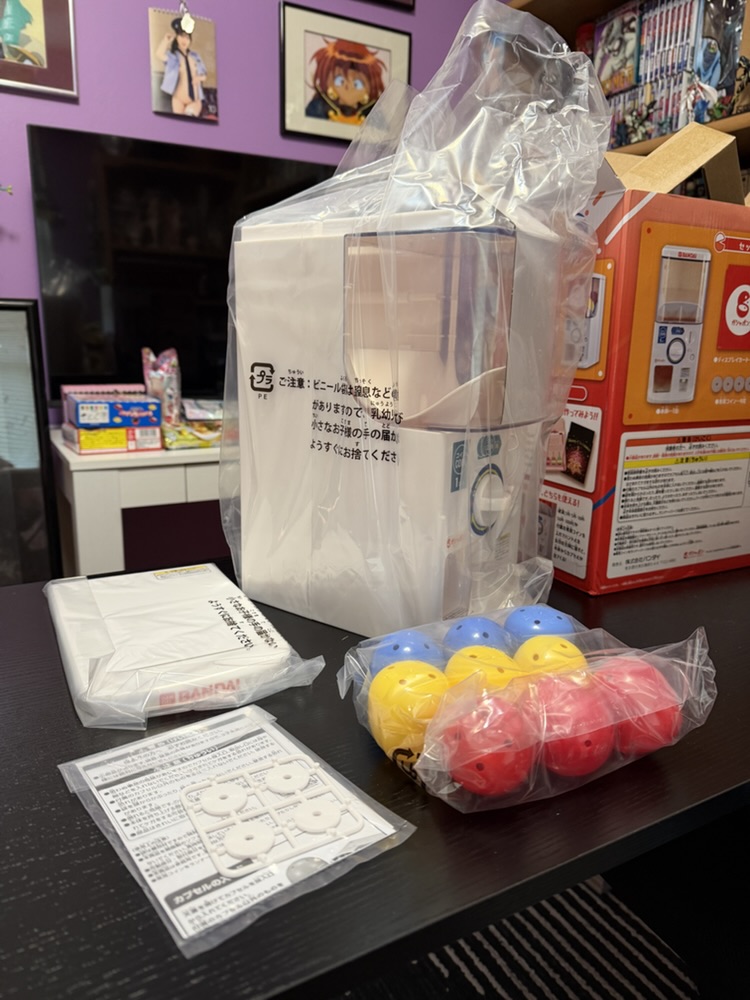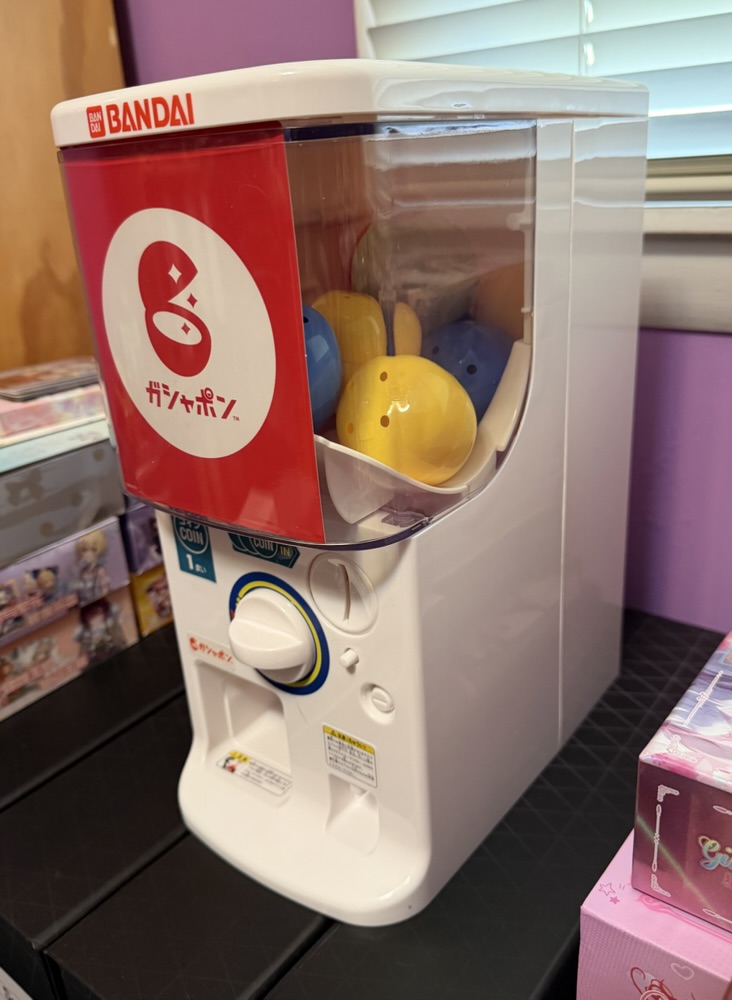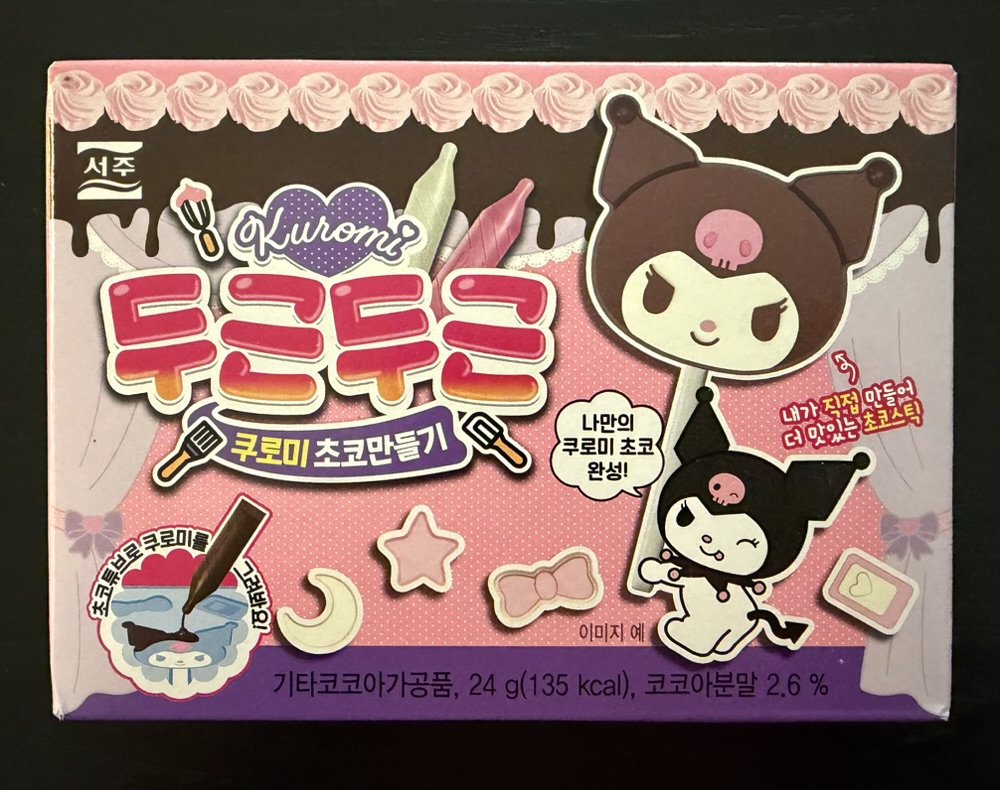
This Kuromi ‘chocolate’ kit is Korean (all the others this week are Japanese) and can be used to make a lollipop and a few smaller candies.
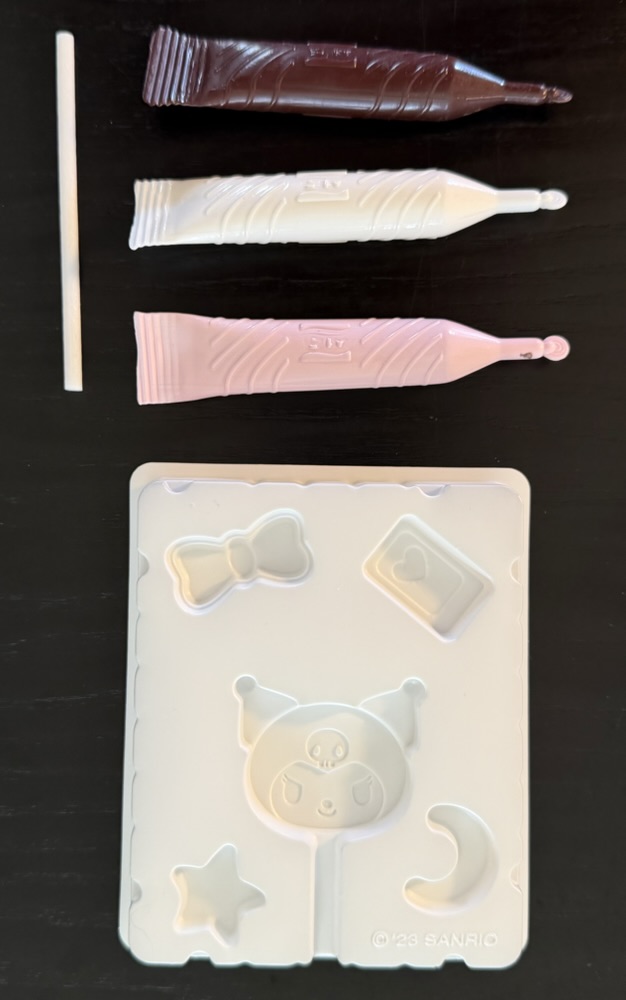
The box contains a mold, a lollipop stick and three tubes of ‘chocolate’. The chocolate is solid, and the first step is to melt it by putting the tubes in hot water:
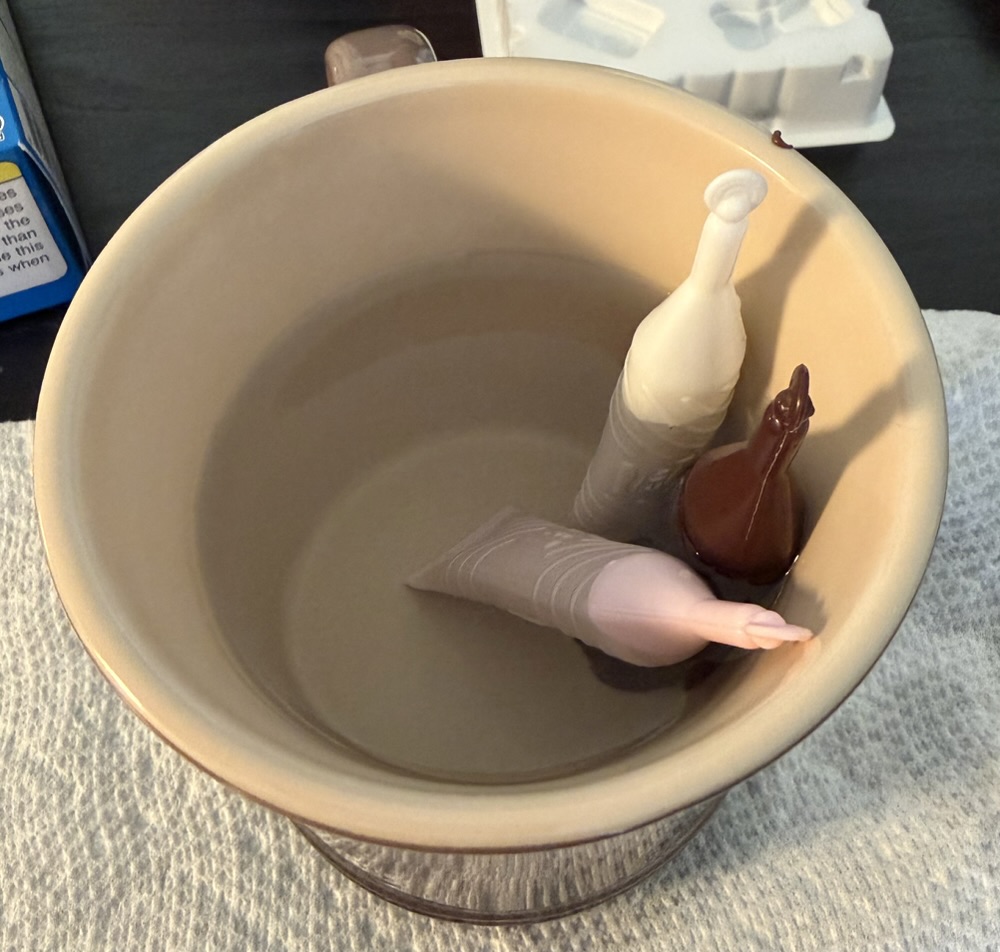
As you can see there are three flavours: vanilla, strawberry and chocolate. There’s no specific instructions on how to use each, and the design of each candy is up to you.

The candies are made by squeezing the chocolate into the molds, and Kristin (who made these) quickly noticed it solidified quickly so every few seconds they had to be put back into the hot water. But the worst was yet to come: it turned out the chocolate tube had a crack in it….

Because of this crack, not only did the chocolate leech out into the hot water, but some of the water also leeched into the chocolate. This was inseparable, and the chocolate was a watery mess as it came out of the tubes.
Regardless she pressed on and put it in the freezer for 10 minutes as per the instructions, and here’s the finished product:

The flavours were strong, but for me sickly sweet. The chocolate was waterlogged and didn’t truly set, but it’s still recognizably Kuromi and was edible so it’s not a complete fail. But it would have been better had that one tube not had a flaw 🙂

